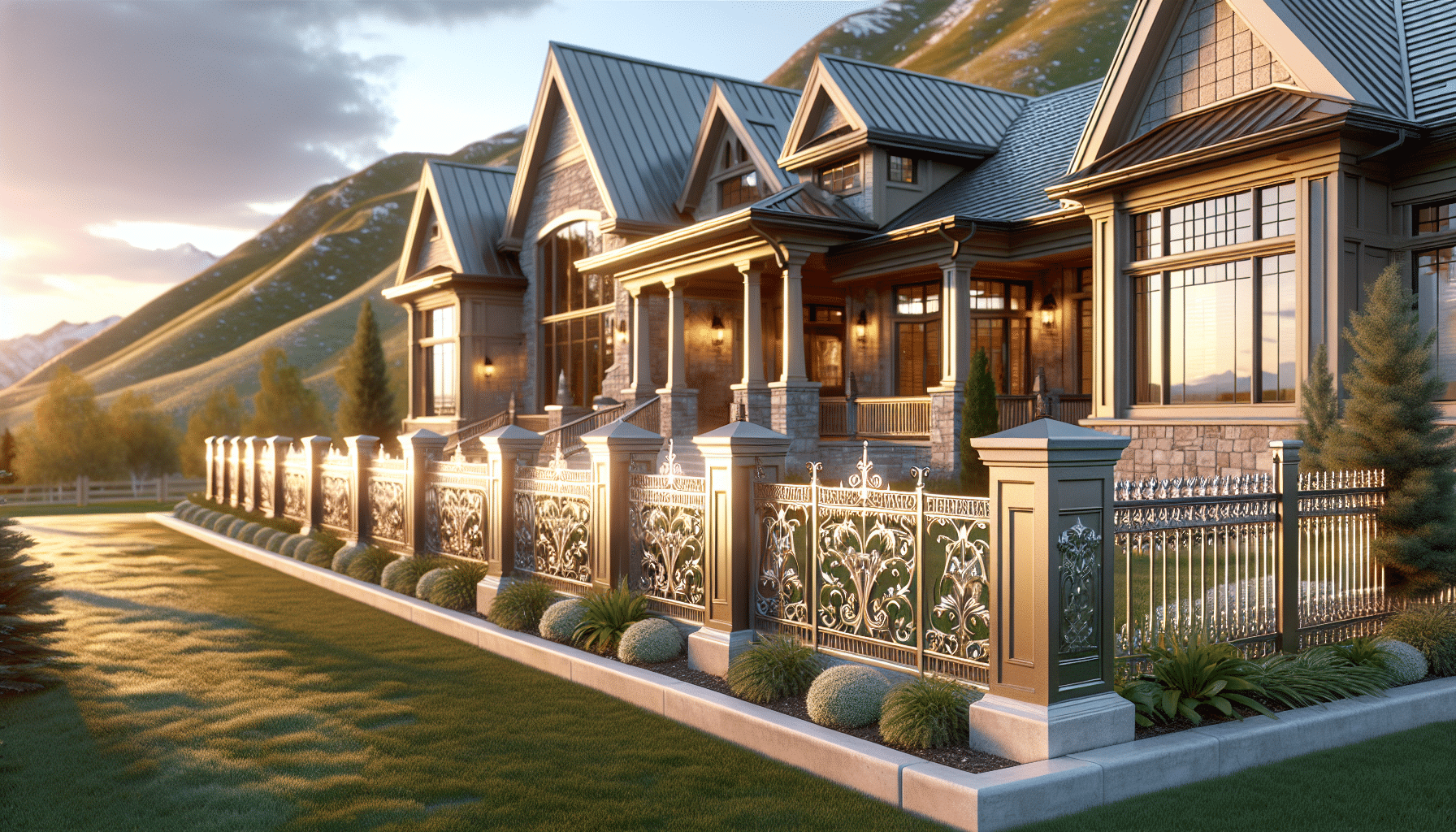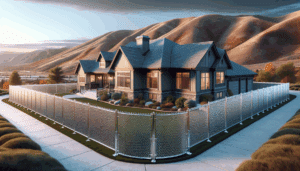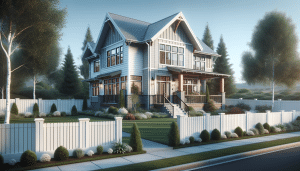Choosing the right fencing material can be daunting, especially when weighing the options of decorative aluminum against traditional materials like Wood or Vinyl. At Logan Fence Company, we understand the complexities involved and aim to simplify this decision for homeowners looking to enhance their property’s aesthetic and utility. This article is crafted to elucidate the nuances of these fencing choices, helping you make an informed decision for your home.
Contents
Understanding Decorative Aluminum Fencing
Decorative aluminum fencing is more than just a boundary marker; it’s a statement of elegance and durability. Often appreciated for its sleek design and low-maintenance nature, aluminum offers a modern touch that complements various architectural styles. Unlike some traditional materials, aluminum is rust-resistant and does not require frequent painting or staining, making it an appealing choice for busy homeowners.
Moreover, aluminum fencing comes in a variety of styles and colors, allowing you to customize your fence to match your home’s exterior. Whether you’re looking for a classic look or something more contemporary, aluminum can be tailored to meet your aesthetic desires. Its ability to mimic the appearance of Wrought Iron without the associated weight and cost makes it a versatile and cost-effective option.
The Appeal of Traditional Wood Fencing
While aluminum offers modern advantages, traditional wood fencing holds a certain charm that appeals to many homeowners. Wood fences provide a warm, natural look that blends seamlessly with landscaped environments. Their versatility is another selling point, as they can be painted or stained in a multitude of colors to achieve the desired look.
However, wood requires more maintenance than its aluminum counterpart, including regular staining or painting to protect it from the elements. Over time, wood fences are also susceptible to damage from pests and weather, which can lead to additional upkeep costs. Despite these considerations, the beauty and warmth of wood often make it a worthwhile investment for those who favor a rustic aesthetic.
The Durability Factor
When it comes to durability, aluminum fences outperform many traditional materials. Aluminum’s resistance to rust and corrosion means it can withstand harsh weather conditions without deteriorating over time. This resilience translates to longevity, with aluminum fences typically outlasting wood and even some vinyl options.
In contrast, traditional materials like wood can warp, rot, or become pest-infested if not properly maintained. While treated wood can mitigate some of these issues, the care requirements are more intensive compared to aluminum. For homeowners seeking a long-term solution with minimal upkeep, aluminum is a compelling choice.
Maintenance Comparison
One of the key selling points of aluminum fencing is its low maintenance needs. It does not require the periodic painting or staining that wood fences do, sparing homeowners both time and money. A simple wash with soap and water is generally enough to keep aluminum looking pristine.
On the other hand, maintaining a Wood Fence involves more effort. Regular inspections to check for rot, termites, and other potential issues are necessary to prolong the life of the fence. Additionally, treating the wood to preserve its integrity and appearance is an ongoing task.
Cost Analysis Over Time
The initial cost of installing an aluminum fence might be higher than other materials, but it’s essential to consider long-term expenses. Aluminum’s durability and low maintenance needs mean that you’ll save on repair and upkeep costs down the line.
Conversely, traditional wood fences might be more affordable upfront, but their ongoing maintenance can add up over time. Replacement of damaged sections, painting, staining, and pest control are considerations that could inflate the total cost of ownership.
Environmental Considerations
If sustainability is a priority, aluminum is a commendable choice. It is 100% recyclable, meaning old fences can be repurposed rather than ending up in a landfill. This feature aligns with eco-conscious homeowners who wish to minimize their carbon footprint.
In contrast, wood is a renewable resource, but the processing and treatment required for fencing can negatively impact the environment. Preservatives and stains used to protect wood from the elements may contain harmful chemicals, which could have environmental repercussions.
Security and Safety Aspects
Aluminum fencing provides sturdy and reliable security without sacrificing aesthetic appeal. Its robust construction makes it difficult to breach, offering peace of mind for those concerned about safety.
While wood fences can also provide privacy and security, they may not be as durable in terms of withstanding forced entry. Aluminum’s strength coupled with customizable design options make it a secure yet stylish choice for perimeter fencing.
Home Value and Curb Appeal
Investing in a fence can significantly enhance your home’s curb appeal and potentially increase its market value. Aluminum fences, with their sleek lines and modern appearance, are known to attract prospective buyers due to their longevity and minimal upkeep.
Wood fences also add value, especially if they are well-maintained and complement the property’s aesthetic. However, the effort required to keep a wood fence looking its best might deter some buyers who prefer lower maintenance options.
Installation Ease
Aluminum fencing is generally easier to install than traditional wood fencing. Its light weight and pre-assembled panels reduce the time and labor involved in the installation process.
In comparison, wood fencing often requires more effort and precision during installation, particularly when dealing with custom designs or challenging landscapes. The need for painting or staining after installation further extends the timeline before the fence is fully realized.
Conclusion
Choosing between decorative aluminum fencing and traditional materials involves considering various factors like durability, maintenance, cost, and aesthetics. Each material has its unique benefits, making it essential to align your choice with your personal preferences and long-term goals. For expert guidance and a complimentary consultation on your fencing needs, contact us at 435-383-5152 or Request a Free Quote.




